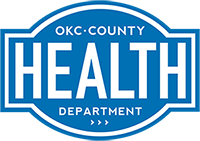Preparing For Emergencies
Preparing for Emergencies
When disaster strikes, you may not have much time to act.
To help protect loved ones, take these simple steps now to prepare your family for sudden emergencies or other disasters.
THREE BASIC STEPS FOR DISASTER OR EMERGENCY PREPAREDNESS:
- KNOW what natural or other disasters could occur in your area and how to prepare for them. Learn about local evacuation routes, so that you know how to leave an area quickly. The Federal Emergency Management Agency offers information on preparedness at their website.
- PLAN out on paper the steps you should take during an emergency and give family members a copy. Talk about potential disasters or emergencies and how to respond to each. Choose a meeting place, other than your home, for family members to gather in case you can’t go home. Make sure you choose an “emergency check-in” contact person and teach your children the phone number for this person.
- PACK emergency supplies in your home to meet your needs for 3 days. Always keep all your important documentation together in one place in case you have to “grab and go” during an evacuation.
Need to evacuate? Have a kit ready that includes:
-
- Identification for yourself and your children, such as birth certificates and social security cards
- Important personal papers, such as health insurance identification cards, immigration papers, and children’s school records
- Funds in the form of cash, traveler’s checks, credit cards, and checkbook
- Keys to the house, car, and safety deposit box or post office box
- Ways to communicate, including a calling card, cell phone with extra battery, and the emergency check-in number for family members to call
- Prescription medications, including written prescription orders, and other necessary supplies such as contact lens cleaner and feminine hygiene products
ESSENTIAL ITEMS FOR DISASTER PREPAREDNESS
Relief workers will most likely be on the scene after a disaster, but they cannot reach everyone immediately. Gather the following supplies in case you have to stay where you are.
Water. Keep at least a 3-day supply of water for each person, stored in plastic containers. Each person needs 1 gallon of water each day.
Food. Store at least a 3-day supply of nonperishable food such as canned meat, beans, vegetables, fruit and juices, peanut butter or other high-energy food, and unsalted crackers. Keep a nonelectric can opener handy. If you have pets, stock up on canned pet food.
Infant care. Store baby formula and water to prepare it if a child is not breastfed. If you need to evacuate quickly, bring towels or sheets to carry a baby instead of a bulky stroller.
Other supplies. Make sure you have large plastic bags that seal for water-proofing important papers, a battery-powered flashlight and radio with extra batteries, and a first aid kit.
BREASTFEEDING DURING AN EMERGENCY
When an emergency occurs, breastfeeding saves lives by:
- Protecting babies from the risks of a contaminated water supply
- Protecting babies from respiratory illness and diarrhea – diseases that can be fatal in populations displaced by disaster
The basics of breastfeeding during an emergency are much the same as they are normally. Continuing to breastfeed whenever the baby seems hungry maintains a mother’s milk supply and is calming to both mother and baby. La Leche League International for information on how to breastfeed in an emergency, even if you have been giving your baby formula.
FOOD AND WATER SAFETY DURING AN EMERGENCY
Food may not be safe to eat during and after an emergency. Water may not be safe to drink, clean with, or bathe in after an emergency such as a tornado or flood because it can become contaminated with bacteria, sewage, agricultural or industrial waste, chemicals, and other substances that can cause illness or death. The Centers for Disease Control and Prevention has information about keeping your food and water safe, which you can access here
RETURNING TO YOUR HOME AFTER A FLOOD
When returning to a home that’s been flooded after natural disasters such as hurricanes, tornadoes, and floods, be aware that your house may be contaminated with mold or sewage, which can cause health risks for your family. Here are some tips from the CDC.
